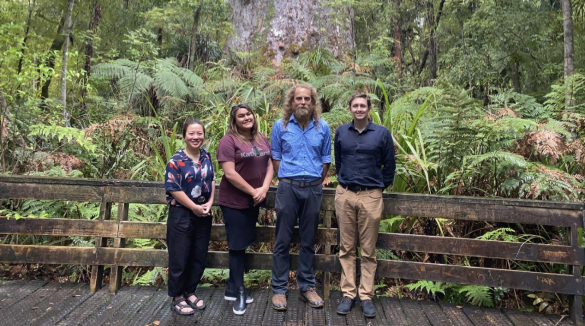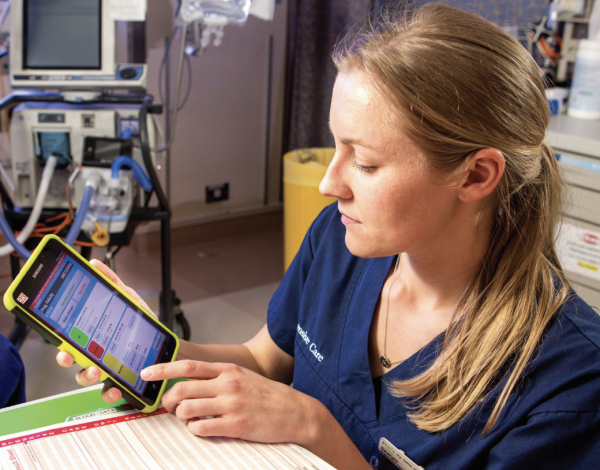ECR Bolt-On: Ensuring new insulin pumps are easy to use by everyone
One of the many challenges people with diabetes face is invasive, expensive, difficult-to-use technology, which means they have less control of their condition. From a Te Ao Māori perspective, the body is considered tapu and blood is valued as sacred. This can also lead to hesitation in accepting external technology. This SfTI funded project focuses on giving people with diabetes and nurses input on the design of externally worn diabetes technology, in order for people with diabetes to manage this on their own terms.
This project is one of SfTI's ‘bolt-on’ projects that are designed to further the work of existing SfTI projects whilst giving leadership opportunities to early career researchers. This project builds on a large-scale SfTI research project that has been working on creating new needle free sensing and insulin delivery technology.
Diabetes is an epidemic with massive social and economic costs, particularly for Māori, Pasifika, and other indigenous peoples. The effect of diabetes on whānau and families is part of creating significant inequity. Patient outcomes are significantly improved using insulin pumps and continuous glucose monitors (CGMs).
Unfortunately, the complex devices used to deliver insulin can be burdensome. Feedback on otherwise high performing devices can be summarised as “I can’t do this without technical support.” Research shows that Māori and Pasifika are 2-4x more likely to lose public funded access to insulin pump therapy. Using co-design principles, this project aims to ensure those at most risk of long-term complications can benefit from these technologies.
“A five-year-old can pick up an iPad and intuitively know how to use it. Adults with years of experience with technology, however, pick up an insulin pump and struggle to figure out how it works. My specialist, who I see every year, doesn’t know how to navigate my pump” said a person with diabetes who wished to remain anonymous.
“A five-year-old can pick up an iPad and intuitively know how to use it. Adults with years of experience with technology, however, pick up an insulin pump and struggle to figure out how it works. My specialist, who I see every year, doesn’t know how to navigate my pump” said a person with diabetes who wished to remain anonymous.
Compounding this situation is that nurses, who lead almost all education for people with diabetes, have no say in device design. Nurses are the healthcare professionals most often seen by people with diabetes. Diabetes educators/nurses play major roles in improving care, and outcomes.
This “bolt-on” project is led by Taylor Pearson and Dr Grace Walker (Ngati Kahungunu, Ngāruahine). A kaupapa Māori approach is intertwined throughout and informed by tikanga raraunga which aims to provide Māori-led/developed technologies to improve quality of care for Māori.
 Image: Members of the team on their community engagement trip to Hokianga. From left: Dr. Jennifer Wong, Dr Grace Walker, Dr Lui Holder-Pearson, Dr Jake Campbell.
Image: Members of the team on their community engagement trip to Hokianga. From left: Dr. Jennifer Wong, Dr Grace Walker, Dr Lui Holder-Pearson, Dr Jake Campbell.
The project involves surveys and hui incorporating Māori (and hopefully Pasifika) input to improve usability, efficacy, uptake and equity-of-access to care and outcomes.
“Co-design and development is vital to this project because it ensures diabetes devices are user-friendly and intuitive to Māori across Aotearoa. We just need to know how to use them” said Dr Grace Walker.
Nurses will also have input on how the device will be used during the design and optimisation phase of the device’s development. Nurse-led input into design and in creating training materials/guidelines will help other nurses to most effectively train people with diabetes and their whānau in how to use the technology with ease.

“I’ve had incidents on the ward, where people with diabetes have had their insulin pumps and CGM taken away and had to go back to finger pricks and injections because the nurses on the ward didn’t know how to use the devices properly. I want to be a part of changing that.” Said Taylor Pearson.
Mrs Pearson is a highly-skilled nurse undertaking a Masters nursing degree. Coupling her existing education and nursing skills with usability research in our clinical trials creates new capacity and leadership for NZ MedTech, and will make sure the new devices are welcomed. Dr Walker is an experienced health and academic researcher. Her input will allow nursing-specific, Māori mentoring and capacity development for Mrs Pearson as well as providing access to Te Rau Ora, The Māori Health Workforce of NZ organisation.
This project is funded for $150,000 to 2024.
Image: A nurse, Georgia, demonstrates the blood glucose control system based on the same foundation models used in SfTI Spearhead project, 'Home and community based care – Type 2 diabetes', in Christchurch hospital intensive care unit. Image courtesy of University of Canterbury